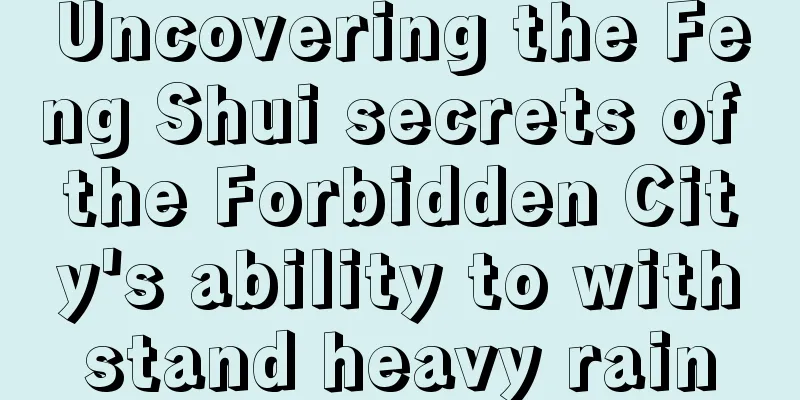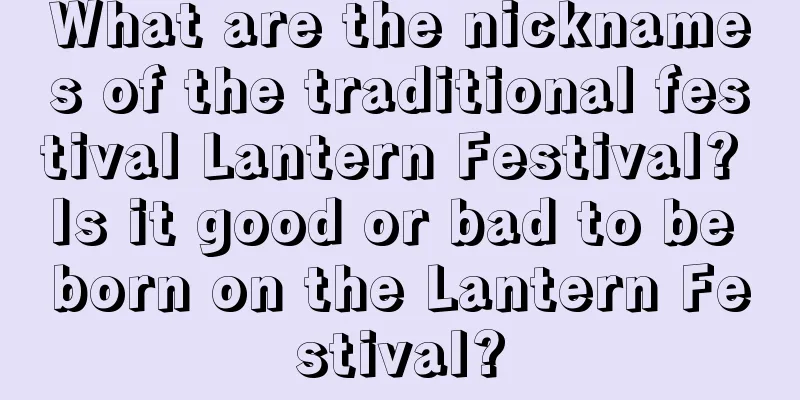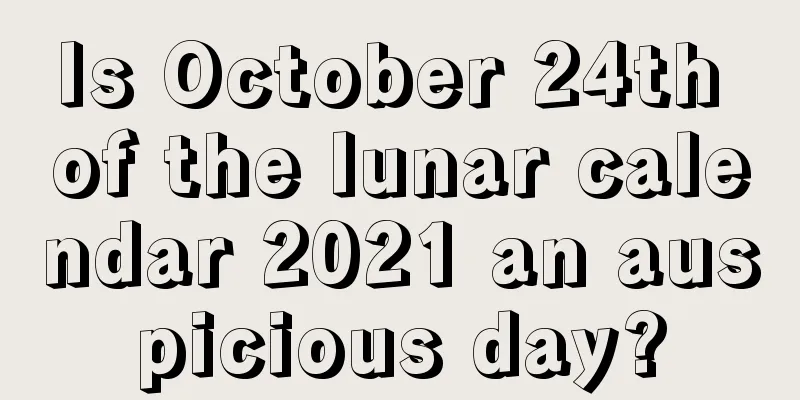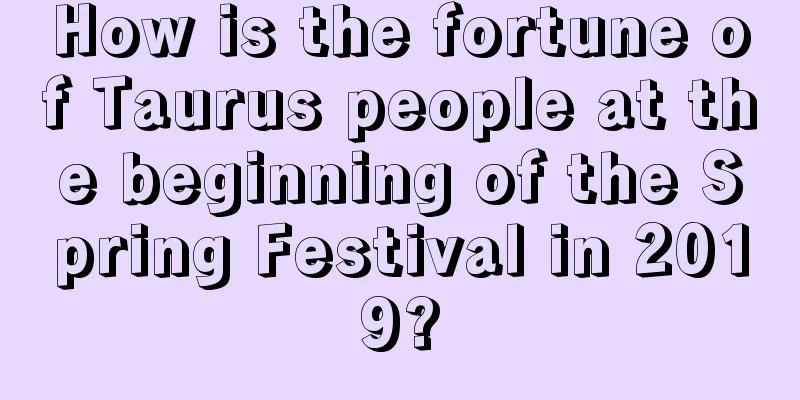Uncovering the Feng Shui secrets of the Forbidden City's ability to withstand heavy rain

|
Introduction: We all know that the Forbidden City has a strong ability to resist rain. It has been recorded in history that during the reign of Emperor Yingzong of the Ming Dynasty, heavy rains caused the nine city walls to collapse, but the Forbidden City did not suffer from "rain damage"; during the Wanli period, 20 days of continuous heavy rains caused deep waterlogging on Chang'an Avenue, but there was still no large-scale waterlogging in the Forbidden City. Why is this? In addition to its unique architectural structure advantages, the Forbidden City also has very good feng shui. What is the specific situation? This issue of Beijing Feng Shui will give you a detailed introduction, let’s learn about it together! 1. The Forbidden City was built according to the terrain and took advantage of the situationBeijing is backed by Yanshan Mountain to the north and faces the Bohai Sea to the east. The terrain is high in the northwest and low in the southeast, and the water flows to the southeast. The topography and landforms, dragon caves, sand and water, architectural landscapes inside and outside the Forbidden City, as well as the orientation and internal and external feng shui patterns of the Forbidden City, were all designed and constructed in accordance with the principles of orthodox Chinese feng shui, making full use of the natural conditions of the environment. Moreover, the ground level of the north gate Shenwu Gate is 46.05 meters, and the ground level of the south gate Wumen Gate is 44.28 meters, a difference of about 2 meters. The drainage facilities of the Forbidden City make full use of this terrain feature, directing rainwater from the east and west into the north-south dry ditches, and then into the Inner Jinshui River. 2. The main drainage channel is surrounded by the Jinshui RiverInner Golden Water River is the inner river of the Forbidden City. On the Nanhe River bank to the east of the northwest corner tower of the Forbidden City, there is a stone archway, which is the water inlet of the Inner Golden Water River into the palace. It is equipped with a sluice gate to control the water level and can be closed in case of flood. The Inner Jinshui River is more than 2,000 meters long. Its course twists and turns, sometimes visible and sometimes invisible, flowing through the entire Forbidden City. It conforms to the superior water flow state in traditional Feng Shui layout: "At every bend, water is stored and then released, it is vast and leisurely, and it makes me want to keep it. It comes without a source and goes without a flow." Moreover, the compass position that the Inner Jinshui River passes through is exactly the same as the pattern outside the city, and its outlet falls in the "Yi Chen" direction. In other words, the feng shui of the buildings in the Forbidden City also follows the feng shui pattern of "Xin and Ren meet and gather Chen". According to legend, the name of Jinshui River is related to the Five Elements. The Inner Jinshui River system draws water from the Yuquan Mountain in the western suburbs. The west belongs to the element of gold, and "gold gives birth to beautiful water", hence the name Jinshui River. Jinshui River not only beautifies the environment, but also serves as a source of water for construction and fire fighting in the city. There are more than 90 courtyards of varying sizes in the Forbidden City, and water is discharged into underground culverts through the drainage ditches of the courtyards themselves, taking advantage of the terrain which is higher in the north and lower in the south. Finally, the water flows into the Inner Jinshui River, and then flows out through the sluice at the southern corner of Donghuamen to merge with the Outer Jinshui River. 3. Multiple vertical and horizontal ditches for internal and external drainage, forming a complete Feng Shui system with the ground buildingsInside the northern wall of the Forbidden City and outside the Red Palace wall, there is a large east-west dry ditch covered with stone slabs with gaps in the slabs to allow rainwater to leak in. The western end of the ditch is connected to the Jinshui River in the City God Temple, and rainwater flows into there. The eastern end extends southward along the palace wall, becoming a north-south longitudinal dry ditch, and rainwater flows into the Jinshui River section of the Qing History Museum. In the north-south direction, there are not only four long ditches running vertically, but also many short north-south longitudinal ditches in the alleys, which are connected to the weft ditches inside the Qianqing Gate and behind the Qianqing Palace that drain water to the east and west, as well as the weft ditches of various palace courtyards. The rainwater is quickly collected and discharged into the inner river and out of the palace by utilizing the natural fall of the ditches which are high in the center and low around, high in the north and low in the south, and high in the middle and low at both ends of some small ditches. 4. The drainage system combines water methods and water systems to drain the surface water.The courtyards in the Forbidden City are high in the middle and low on the sides, higher in the north and lower in the south. When it rains, the water first flows into the open ditches under the foundations of the surrounding houses. Obstacles such as steps or buildings are grooved to allow ground water to pass through the obstacle. The water from the ground or open ditch then flows into the underground through the inlet. The water inlets are mostly square stone slabs carved into the shape of Ming and Qing copper coins (big coins), that is, there are 5 holes hollowed out in the outer circle for water to enter, which are called coin holes. The three front halls of the Forbidden City, the Hall of Supreme Harmony, the Hall of Central Harmony and the Hall of Preserving Harmony, are all built on a three-story platform 8.13 meters high. At the bottom of the railings around the platform, there are holes for draining rainwater. There is also an exquisitely carved stone dragon head under each baluster, called "Chishou", with a round hole in its mouth, which also serves as an auxiliary drainage channel. Whenever it rains, rainwater gushes out from 1,142 drainage holes, presenting a "Thousand Dragons Spraying Water" landscape, falling layer by layer and flowing into the courtyard, leaving no water on the table top. There are stone drainage ditches around the base. The discharged water flows into the Neijinshui River through the terrain which is high in the north and low in the south. |
<<: Fish tank feng shui: things to do with fish farming
>>: What kind of Feng Shui fish is best for people born in the Year of the Dog?
Recommend
Will a boy born on June 17, the day before the beginning of autumn in 2020, have a strong life and a good personality?
Introduction: Although everyone cannot choose the ...
Is it auspicious to break ground the day before Chinese Valentine's Day in 2019? How do you say Chinese Valentine's Day in English?
Introduction: Generally, it is necessary to choose...
What are the do's and don'ts on the fourth day of the sixth lunar month in 2017?
1. What day is the fourth day of the sixth lunar ...
Which zodiac sign is born on June 24, 2019 in the lunar calendar?
June is a month full of energy and passion. So, wh...
Is April 20th of the lunar calendar in 2018 suitable for traveling?
The lunar calendar is one of China's tradition...
Can we visit the graves to pay respect to our ancestors in advance during the Winter Solstice in 2018? What are the taboos in visiting the graves during the Winter Solstice?
Introduction: Winter Solstice is an important day ...
Check the position of the God of Happiness on December 18, 2019 in the lunar calendar. What does the God of Happiness refer to?
People believe in many gods, which is a kind of s...
Is the third day of the first lunar month the birthday of Guzi? What should not be done on the third day of the first lunar month in 2021?
Introduction: The third day of the first lunar mon...
Do girls born on the 19th day of the fifth lunar month in 2019, during the summer solstice, have water as their destiny? What is missing from the five elements?
Introduction: Children born at different times hav...
Do pig babies born in the beginning of summer in 2019 have good fortunes? Will they become rich and powerful if they are born in the beginning of summer?
Introduction: New life is born every day, and chil...
Why do we set off firecrackers during the Spring Festival?
The Spring Festival is an ancient festival in my c...
Is it good for people born at noon on October 15, 2019, the Lower Yuan Festival?
Is it good for people born at noon on October 15, ...
Is it okay to get married on April 13th of the lunar calendar in 2018? Is it okay to get engaged and get a marriage certificate?
If you want to know more about the days in April ...
When is the Winter Solstice in 2019? What are the taboos during the Winter Solstice?
When is the Winter Solstice in 2019? What are the ...
Introduction to the origin of the Ghost Festival. What is the Ghost Festival? When is the Ghost Festival?
The Zhongyuan Festival is also a traditional Chine...









